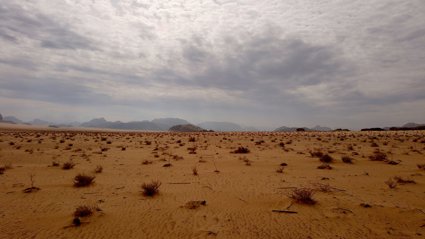
Lesson two: Physical and human causes of natural hazards in the Gobi Desert – Mongolia and China
Aims
-
To understand the physical and human geography of contrasting locations in the Gobi desert
-
To understand why it is becoming a more hazardous environment in which to live, in particular in relation to food security.
Key ideas
Continentality, rain-shadow, nomadic herding, high- tech farming, winter wind storms (dzuds), food security, autonomous region.
Context
The Gobi Desert is the third largest desert in the world. Its physical geography is challenging for human survival but has always been settled in mainly by nomadic herders. However its human geography is changing; pressure for the changing nomadic societies in Mongolia in the north and the encroaching high-tech Chinese farmers from the south. The aim of the next two lessons is to understand the physical and human geography of contrasting locations in the Gobi desert and to begin to understand why it is becoming a more hazardous environment in which to live, in particular in relation to food security.
Resources
-
Student task sheet
-
Research summary article
-
PowerPoint presentation
Activities
See the student task sheet for further details.
The Gobi desert background: A land of contrasts
Following last lesson you should have done some background research on the Gobi desert. Share ideas from the class – use the power point slide also.
-
WHERE? Use Google Earth to describe the Gobi desert’s location – make note of its location in relation to the Himalaya mountains
-
WHAT is the climate like? WHY is the climate like it is?
-
WHO (lives there)?
-
HOW? (is it changing – how is Mongolia’s economy changing?)
Physical geography causes of this dry and cold land
Naturally, physical processes acting in the Gobi make it hazardous in terms of water security, wind storms, temperature variations and thus food security. Read through the statements on the student task sheet and put them in order to explain why the Gobi is a landscape of extremes (answers on the power point).
Human geography factors in creating a more hazardous landscape
Humans have survived in these challenging conditions for centuries – mainly through nomadic herding rather than settled crop farming. Communities moved through the landscape to find more hospitable environments and used their indigenous knowledge of how best to live off the land as well as a networks of friends and families to support their survival. Troy Sternberg’s field work however shows that in examining three contrasting locations within the Gobi desert; the human geography is rapidly changing.
The Gobi desert has been struck by two terrible recent hazards:
-
The 2010 winter ‘dzud’ in Mongolia – a wind and snow storm
-
In China the 2011 drought which ruined harvests in the Gobi and beyond
The aim for the rest of the lesson is to understand these socio-economic and political changes and the impact this is having on lives of the communities who are trying to survive here and ultimately their food security.
Using the power point, describe the life you see in the photos of each of the three locations – focus on landscape, type of farming & buildings. Use the last ‘written’ slides to add to your notes.
Last lesson we learnt how Dr Troy Sternberg had completed in-depth qualitative research during his 11 week field research in the Gobi desert. We learnt that geography researchers use their findings to deliver lectures and write papers, many of which eventually are published in academic geography journals. This is a type of reading that is often in depth and can feel more challenging to your normal reading at A-level. You are now going to have a go at reading through a summary of Dr Sternberg’s papers.
Here are a few literacy tips:
-
Read once for meaning (check any unfamiliar words), read a second time for overall understanding and read a third time to find the notes and ideas you need for your work
-
Underline areas you are not sure on – after you have finished ask your teacher or look up unfamiliar words online
-
Write a short summary sentence/words/phrases in the margin of each paragraph – this will allow you to more quickly identify which part of the reading you need for your ‘third read through’ when you start to take your notes
-
Once you have finished your reading, make some concise notes under specific headings
-
(see the student task sheet for a table to fill in)
Summarising the hazards and challenges in the three different field work locations
Reflecting on what you have read and learnt about, annotate (using the student task sheet) onto each line what factors contribute to each location being food secure or insecure. An example one has been done for you on the power point.
